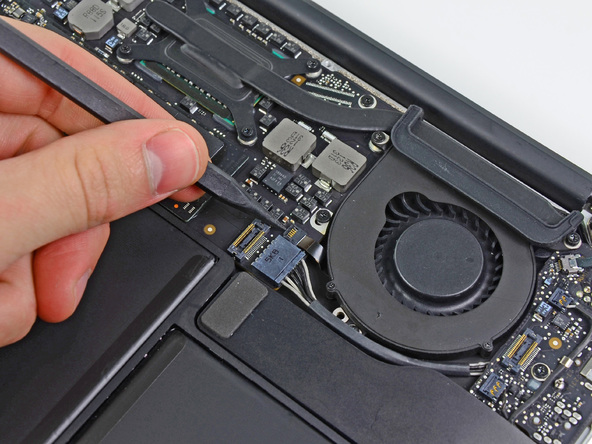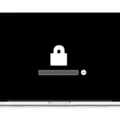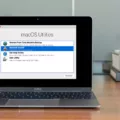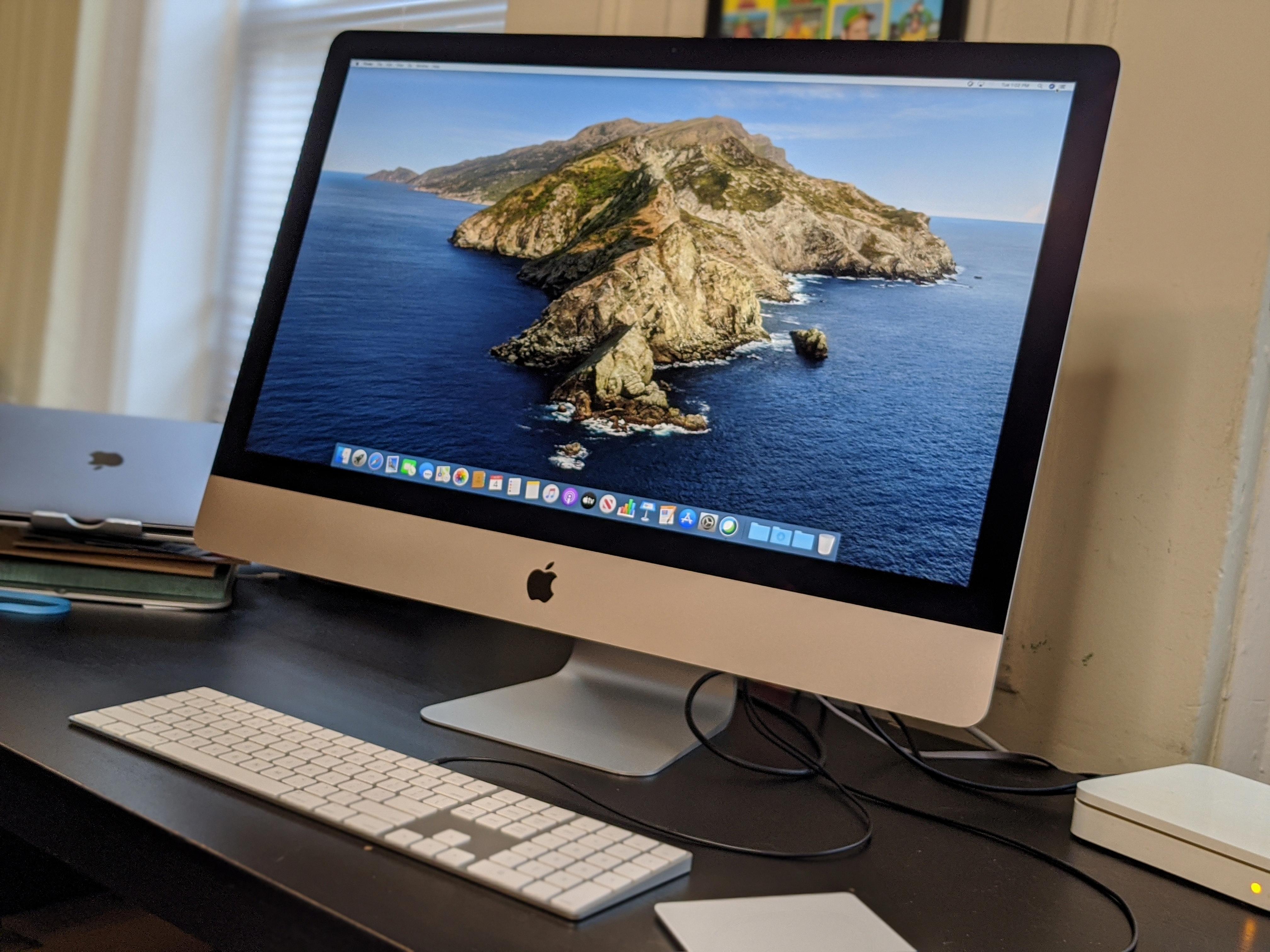Are you wondering how to check if your iMac’s fan is in good working condition? It can be difficult to tell if the fan is malfunctioning by just listening for a noise. Fortunately, thee are some simple tests you can do to make sure your iMac’s fan is operational.
The first test you can do is to turn off your iMac and then press and hold the “D” key whle turning it back on. This will initiate a hardware test that will let you know if your fan is broken or not. If the test finds an issue with your fan, then you will need to replace it.
Another way to check the fan’s health is by putting your ear up to the bottom of your iMac. If you hear a gentle whirring noise, then your fan is functioning properly. However, if you hear rattling, grinding, screeching or ticking noises coming from it, then it is likely malfunctioning and neds replacing.
You can also use Activity Monitor on Mac to view processor activity over time. To do this, click CPU (or use the Touch Bar). To view current processor activity, choose Window > CPU Usage and for recent processor activity choose Window > CPU History.
By running these tests on a regular basis, you can help ensure that your iMac’s fan remains in optimal condition and that it continues running smoothly for years to come!

Testing the Fan on an IMAC
To test your iMac’s fan, you’ll need to turn off the computer, then hold down the “D” key while turning it back on. This will run a hardware test that will let you know whethr or not your fan is working properly. If the test finds that your fan is broken, you’ll need to replace it in order to keep your computer running smoothly.

Source: trustedreviews.com
Diagnosing a Broken Mac Fan
If you suspect your Mac fan is broken, you can try putting your ear up to the bottom of your MacBook Pro. If you hear a gentle whirring noise, then it is likely functioning properly. However, if you hear rattling, grinding, or revving noises, then it could be malfunctioning. It could also come across as a screeching or ticking noise. If this is the case, it’s best to get it checked out by a professional as soon as possible, as a malfunctioning fan can cause serious damage to your computer.
Checking CPU Health on Mac
Checking your CPU health on Mac is easy and straightforward. First, open the Activity Monitor app. This can be found in the Applications folder, located in Finder. Once you have opened the app, click on the CPU tab at the top of the window. Here, you will be able to view a graph of your current processor activity over time as well as a list of all running processes and their respective usage. Additionally, you can set up a Notification Center alert to inform you when your processor is being overworked or if thre is an issue with any processes running in the background. This way, you can detect and fix any potential problems before they become serious issues.
Checking Fan Diagnostics
To check your fan diagnostics, you’ll need to download and install a tool such as SpeedFan. After the program is installed, launch it and wait a few minutes for it to retrieve data. Examine the information presented in the main program window, paying special attention to the RPM data for your CPU fan. Compare this RPM data with the normal RPM range listed in your fan’s manual or specifications sheet. If there is any discrepancy between the two values, it could be an indication that there is a problem with your fan and you should contact technical support for further assistance.
Checking Fan Functionality
To check the functionality of a fan, start by looking at it visually. If you have a desktop computer, you should be able to see the fan spinning on the back of the case. Make sure that it is spinning at a consistent speed and that there is no obstruction blocking the fan blades. If you can’t physically see the fan, you can also try listening for it—a healthy fan should make a low humming noise when running. Additionally, many computers have built-in temperature monitors that will alert you if your computer is gettig too hot due to a malfunctioning fan. If any of these methods reveal that your fan is not working properly, you should replace it immediately before using your computer further.

Source: support.apple.com
Identifying a Burnt Out Fan
If you suspect that your fan is burnt out, it is important to check the fan blades in order to determine if they are broken or damaged. Additionally, you should inspect the fan motor for any signs of burning, corrosion, or discoloration. If the blades and motor appear to be in good condition but the fan is not working properly, you may want to test its power levels by usig a multimeter. It is also a good idea to check the wiring connections and make sure they are secure and free of corrosion. Lastly, if all else fails, you may need to replace the entire blower fan assembly.
Cost of Replacing a Mac Fan
The cost of replacing a Mac fan will depend on the model of Mac you have (Macbook or iMac). For example, the cost of replacing a cooling fan in a Macbook will typically be around $80, plus an additional $150 for any overheating repair that may be needed. Similarly, the cost to replace a fan in an iMac can vary from $120 to $250 depending on the particular model. We can povide you with a more accurate price quote after assessing your particular device.
Signs of a Failing Cooling Fan
If your cooling fan is going out, you may notice a few key warning signs. The first and most obvious sign is an increase in engine temperature. Without the fan’s cooling power, your engine may overheat more quickly or even shut down. You may also notice a decrease in air conditioning performance as the fan is used to draw outside air through the condenser. Additionally, you may hear a loud noise coming from the radiator area when the fan is operating. If you experience any of thse symptoms, it’s important to take your car to a mechanic as soon as possible to have it serviced before any major damage occurs.
Running a CPU Health Check
The Windows Security Device performance & health page is a great place to start when you want to run a CPU health check. To begin, open the Windows Security application on your computer, then select Device performance & health. From there, you can view the Health report and any other information rlated to your device’s performance.
If you want more detailed information about your CPU’s health, you can click the Details button underneath the CPU section of the report. This will give you access to data about your processor’s temperature, power, and other essential factors that affect its performance.
You can also click the “Run a CPU Health Check” button at the top of this page to launch a diagnostic scan that will identify any issues with your processor. After running a quick scan for any potential problems, Windows will provide you with a list of recommended actions that can help improve your device’s overall performance.
Checking CPU Temperature and Fan Speed on a Mac
To check your CPU temperature and fan speed on a Mac, you will need to use the Fanny app. First, open your Mac’s notification bar and click on Today. Then, click on 1 New at the bottom of the list. From the list that appears, select Fanny by clicking on the ‘+’ icon againt it. Finally, tap Done at the bottom left corner to finish adding Fanny to your Today view. Once this is done, you can open Fanny and view your CPU temperature and fan speed.
Signs of a Corrupted Mac
If you suspect that your Mac may be corrupted, there are several signs to look out for. First, you may experience applications that suddenly quit or become unresponsive. You may also find that some files won’t open at all, and the system may not transfer files to new folders. You might also find that your computer stops responding to input altogether. In the most severe cases, your Mac might simply refuse to start up.
If you are experiencing any of thee issues, it is likely that your Mac is corrupted in some way and you should take steps to address the issue as soon as possible.
Conclusion
In conclusion, testing your Mac’s fan is a straightforward process. Simply turn your computer off, then hold the “D” key while turning it back on. This will initiate a hardware test that will let you know if your fan is functioning correctly. You can also put your ear up to the bottom of your MacBook Pro and listen for any rattling, grinding, or revving noise. If you detect any of tese noises, it’s likely that your fan is malfunctioning and needs to be replaced. Lastly, you can view processor activity over time by opening Activity Monitor on Mac and clicking CPU from the Touch Bar or Window menu.








